ASUS Eee Pad Transformer Review
by Anand Lal Shimpi on April 21, 2011 4:00 AM ESTThe Honeycomb Update & Software Preload
When I reviewed the Motorola Xoom I praised Honeycomb for being a brave effort by Google to reinvent the Android UI, as well as for delivering a tabbed web browser as a part of the default software configuration. Since that review Google updated Honeycomb to 3.0.1 and enabled support for Adobe Flash 10.2.
The move to 3.0.1 fixed some obvious bugs with the OS; nearly everything I complained about in our Xoom review has been addressed either mostly or entirely. Right now the biggest issue that remains with 3.0.1 has to do with performance. From a clean boot, Honeycomb feels reasonably snappy but performance seems to degrade quicker with use than on earlier Android releases. Force quitting apps will generally restore performance but it's something I've noticed seems necessary more frequently than on phones that run Froyo or Gingerbread.
With flash enabled the Honeycomb web browser is pretty compatible with a lot of what you'll encounter on the web. There are occasionally issues, such as the reddit front page:
Performance is good on simpler pages but it can quickly get bogged down on anything more complex with a lot of Flash. Google is planning a major update to Honeycomb that should improve performance across the board but there's no skirting the issue that we'll need more CPU and GPU power in these tablets.
While the Honeycomb experience is mostly stock on the Eee Pad, ASUS does include some custom software. ASUS' MyNet app is a DLNA controller that lets you push content from the Eee Pad to DLNA compliant devices on the same network. The Eee Pad also has a couple of custom widgets enabled, mainly weather, time/date and email. As I mentioned earlier, ASUS even enabled screenshot functionality from within the OS:
The Eee Pad comes pre-loaded with an Android office suite called Polaris Office. Polaris includes a document, spreadsheet, and presentation app, all of which are compatible with Microsoft Office as well as Google Docs.
If you supply your Google login credentials you can edit/save documents stored in the cloud. It's a pretty useful set of apps that work very well with the Eee Pad in docked mode as a netbook replacement. Unfortunately several bouts of instability and the fact that Polaris doesn't auto save your documents kept me from using the apps to write too much of this review.
ASUS ships the Eee Pad with a custom live wallpaper it calls MyWater. The animated background represents battery life by a rising/falling water level in a virtual glass. The water will also slosh around depending on how you hold the tablet. Unfortunately battery life is impacted by the wallpaper on the order of 4% and animated backgrounds can reduce overall system performance so I recommend disabling it.
ASUS thankfully did away with the dreadful back/home/task icons Motorola used on the Xoom. The icons in the lower left of the screen are far more legible now.


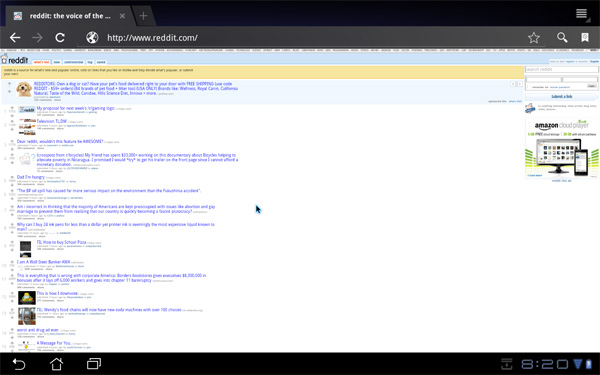
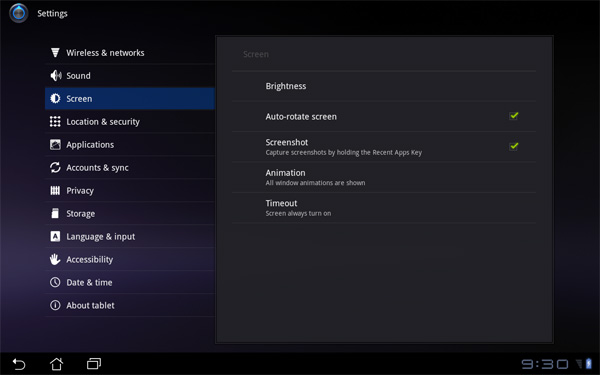
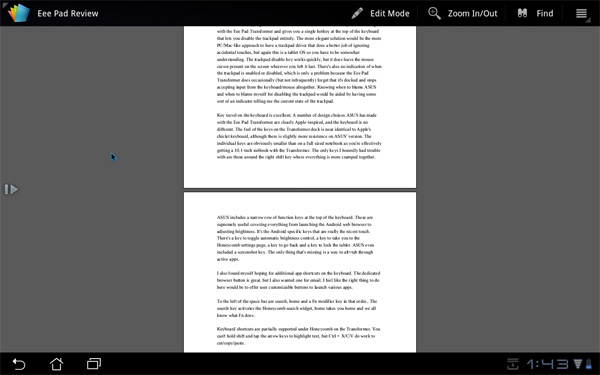
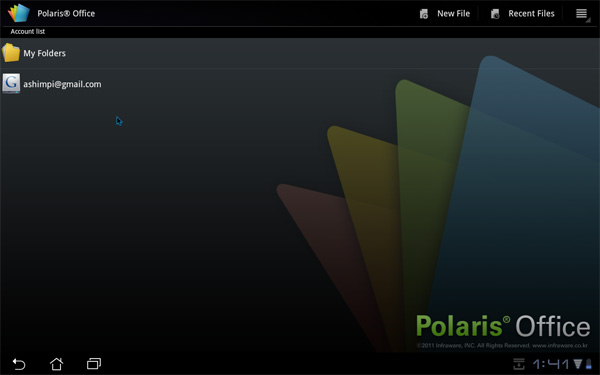
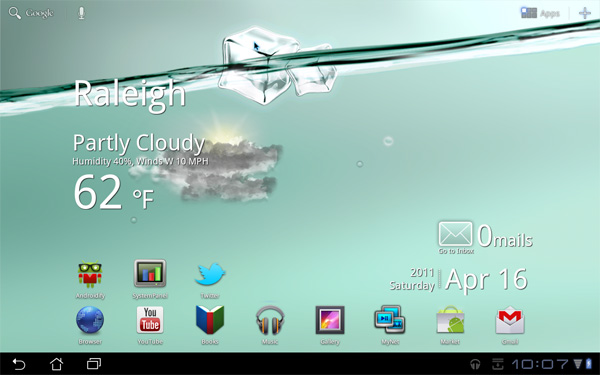








127 Comments
View All Comments
stm1185 - Thursday, April 21, 2011 - link
Great review. I don't see much current use for the transformer now, but the idea of having something as capable as my old 2.6ghz quad core Phenom tower, in a tablet/netbook, running Windows 8, that is just awesome. I can't wait to see what Asus, MS, and Nvidia or Intel come up with next year.damianrobertjones - Thursday, April 21, 2011 - link
Asus EP121Acer 1820ptz
Dell latitude XT2
HP Elitebook 2740p
and many more... they are available NOW!
anishannayya - Thursday, April 21, 2011 - link
I own the x201T, and while it is a great device, it isn't meant for everyone (it is a convertible tablet PC). While it runs Windows 7, has multi-touch capable screen (and has multiple levels of pressure sensitivity with a stylus), gets 7 hours of battery life, and works like a conventional PC in other ways; it is also nearly 4 pounds with the extended battery and has a typically "large" 12.1" laptop form factor.The EEE Pad is designed for people who want a thin, lightweight device that is relatively mobile and offers ultra-long battery life. If you don't need to use Windows style applications (90% of consumers), then this device is more suitable than even a traditional PC.
spambonk - Thursday, April 21, 2011 - link
And all of them crap.TylerTech - Sunday, April 24, 2011 - link
I also own an x201 (work purchased it for a project) I always have a hard time finding a good use for it. If I was using the stylus to draw it would be perfect but I don't.I would rather have the transformer or xoom and use them as a reading device. I just hope they improve browser sync to the point where its seamless as mentioned in the review.
medi01 - Thursday, April 21, 2011 - link
Turning notebook into a tablet and vice versa is a brilliant idea. I bet most manufacturers will follow.Spivonious - Thursday, April 21, 2011 - link
You do realize that convertible laptops have been around for 10 years, right?therealnickdanger - Thursday, April 21, 2011 - link
Yeah, I owned a couple. Bulky, expensive, hot, poor battery life. Obviously they can do more work, but you pay for it in many ways. I've always been a tablet fan, but they have never been as simple and easy as Android/iPad.I'm still looking forward to sub-$200 pads. And if Microsoft can make Windows8 bridge the gap between regular PC work and content creation with the mobile content consumption models, then the world will be a perfect place.
Too bad the world is ending in 2012, so we'll only have a short time to play with it.
spambonk - Thursday, April 21, 2011 - link
You do realize they were rubbish?VooDooAddict - Sunday, April 24, 2011 - link
A well equipped tablet PC rubbish? ... No.Expensive? ... Yes.